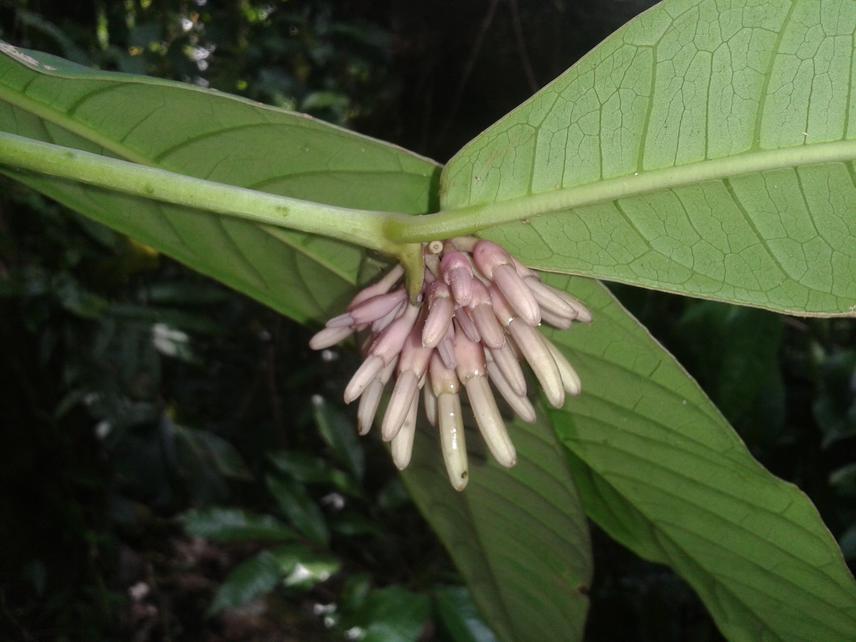Eduardo Chacón Madrigal
Aims: Understand the ecological and evolutionary mechanisms that explain why some species have a restricted distribution.

Faramea permagnifolia.
The inter-specific variation of geographical range size is still an open question. The ecological niche, that is a multidimensional space of the requirements that an individual or species has for growing and reproducing successfully, has a major role within hypotheses proposed to explain that variation. The species niche breadth is determined by the functional traits acquired throughout species evolutionary history and by the presence of other species with which it interacts directly and indirectly. Although, many demographic, physiological, ecological, historical and stochastic variables affect the species geographical range size, there is a good correlation between niche breadth and geographical range size. However, the causality of this relation is yet unknown because a generalist species with a wide niche breadth could be widespread, but also a species with a large geographical range could consist of narrow niche subpopulations specialized to local conditions.
An investigation of the niche breadth–range size hypothesis in a phylogenetic framework, incorporating relevant functional traits, could give much information on this issue. A better mechanistic understanding of the reasons of current small ranges and rarity would help in guiding appropriate management of such species in order to protect and preserve them in an area of rapid global changes. In particular, intra-specific variation in functional traits should be a close indicator of niche breadth and hence differences in within-population variability in functional traits among narrow and widespread species would actually suggest niche breadth to be the reason rather than the consequence of range size variation.
Following this rationale, I propose to study intra-specific variation in functional traits of narrow endemic and widespread tropical trees which are related phylogenetically and which co-occur in a restricted region of Costa Rica. This research should help us to get a better idea about the causality in range size – niche breadth relationships and hence improve our understanding of intra-specific differences in geographical range size.